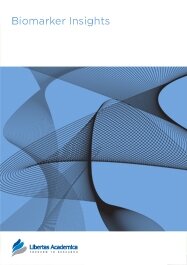

Publication Date: 08 Nov 2011
Type: Original Research
Journal: Biomarker Insights
Citation: Biomarker Insights 2011:6 127-133
doi: 10.4137/BMI.S7286

Aim: To assess plasma zinc and copper concentration in individuals with Asperger's Syndrome, Pervasive Developmental Disorder-Not Otherwise Specified (PDD-NOS) and autistic disorder, and to analyze the efficacy of zinc therapy on the normalization of zinc and copper levels and symptom severity in these disorders.
Subjects and methods: Plasma from 79 autistic individuals, 52 individuals with PDD-NOS, 21 individuals with Asperger's Syndrome (all meeting DSM-IV diagnostic criteria), and 18 age and gender similar neurotypical controls, were tested for plasma zinc and copper using inductively-coupled plasma-mass spectrometry.
Results: Autistic and PDD-NOS individuals had significantly elevated plasma levels of copper. None of the groups (autism, Asperger's or PDD-NOS) had significantly lower plasma zinc concentrations.
Post zinc and B-6 therapy, individuals with autism and PDD-NOS had significantly lower levels of copper, but individuals with Asperger's did not have significantly lower copper. Individuals with autism, PDD-NOS and Asperger's all had significantly higher zinc levels.
Severity of symptoms decreased in autistic individuals following zinc and B-6 therapy with respect to awareness, receptive language, focus and attention, hyperactivity, tip toeing, eye contact, sound sensitivity, tactile sensitivity and seizures. None of the measured symptoms worsened after therapy. None of the symptoms in the Asperger's patients improved after therapy.
Discussion: These results suggest an association between copper and zinc plasma levels and individuals with autism, PDD-NOS and Asperger's Syndrome. The data also indicates that copper levels normalize (decrease to levels of controls) in individuals with autism and PDD-NOS, but not in individuals with Asperger's. These same Asperger's patients do not improve with respect to symptoms after therapy, whereas many symptoms improved in the autism group. This may indicate an association between copper levels and symptom severity.
PDF (507.65 KB PDF FORMAT)
RIS citation (ENDNOTE, REFERENCE MANAGER, PROCITE, REFWORKS)
BibTex citation (BIBDESK, LATEX)
XML
PMC HTML

I would like to extend my gratitude for creating the next generation of a scientific journal -- the science journal of tomorrow. The entire process bespoke of exceptional efficiency, celerity, professionalism, competency, and service.
Facebook Google+ Twitter
Pinterest Tumblr YouTube